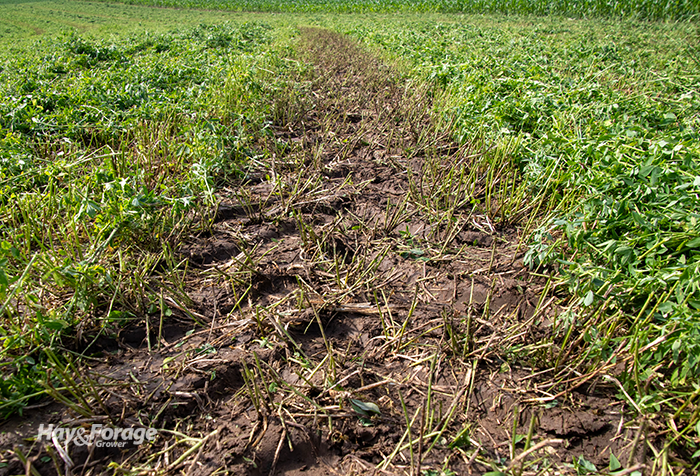
A phone call to my dad went straight to voicemail the other day, only to be followed up a few hours later with a text that said, “Sorry I missed your call. The agronomist was here digging up corn and looking for rootworms.”
In addition to scouting for pests, now is a good time of year to dig up plants and assess roots for compaction issues. Corn isn’t the only species that can suffer from a layer of compacted soil, though. A history of excessive tillage may be detrimental to alfalfa and grass stands as well.
In the latest issue of the Field Crop News newsletter, Tom Kilcer explains how a compaction layer from years of disking and using moldboard or chisel plows can limit root growth to a 6- to 8-inch depth. This type of compaction in the upper subsoil can significantly reduce forage yield potential.
Kilcer also notes compaction can occur in all soil types. Moreover, freezing and thawing cycles in colder climates do not alleviate compaction in the offseason. For example, the Advanced Ag Systems agronomy consultant described the roots of a 15-year-old alfalfa-timothy stand in a northern part of the country that did not grow beyond 7 inches because of previous decades of tillage with a moldboard plow.
Wheel traffic and tire pressure are other factors that can exacerbate compaction lower in the soil profile, especially when tractors, choppers, and trucks make several trips across a hayfield multiple times a year. This type of intensive management emphasizes the value of having boots on the ground and actively evaluating plant roots for compaction in perennial systems.
After digging up a plant, skim soil away from roots to assess their growth patterns, starting as early as when the radicle emerged from the seed. Identify where the primary roots shift from being round and healthy with numerous root hairs to looking flat and rectangular with no secondary offshoots to pinpoint where compaction begins in the soil.
Forage is an answer
Although tillage can be the biggest culprit of compaction, Kilcer suggests it can also be a solution — as long as it is used in conjunction with annual forages and no-till planting. For example, he suggests removing deep compaction in conventional row crop systems by using a ripper with narrow vertical shanks without wings. Then, seed winter forages in the field before no-tilling the next crop the following spring.
“Deep tillage without changing the rest of the cropping system is a waste of time,” Kilcer asserts. “Removing compaction and then utilizing year-round cropping systems based on no-till has a tremendous beneficial effect on the soil.”
It may take several seasons to eliminate the plow pan with this approach, but Kilcer notes diversified crop rotations that include annual forages and no-till can offer other soil health benefits that indirectly ease compaction, too. An uptick in earthworm populations, for instance, further enhances soil pore space, aeration, and water infiltration.
“Compaction is caused by tillage operations, wheel traffic with heavy axle loads and high tire pressure, raindrop impact on tilled soil, and the same crop growing in the field without rotation,” Kilcer summarizes. “You need to correct it by doing something different.”

